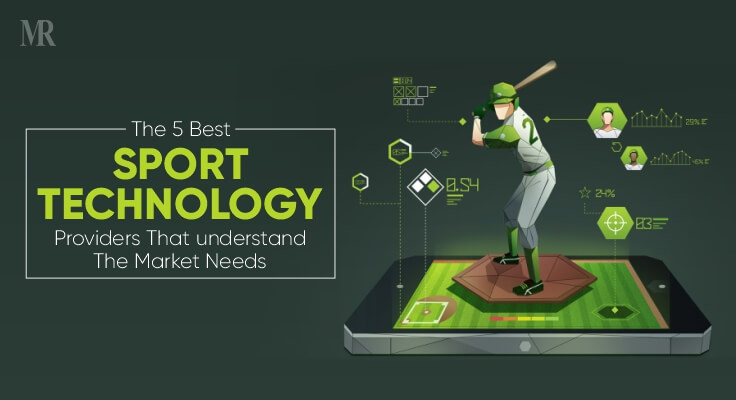Athletes’ training and performance have substantially changed as a result of the increased usage of technology in sports in recent years. Sports-related technology is constantly evolving and has become an essential component of sports training and performance.

Athletes and coaches always seek innovative methods and tools to enhance training regimens and maximize performance. In recent years, technology has emerged as a game-changer in sports training, revolutionizing how athletes prepare, analyze, and excel in their respective disciplines.
Technology has become integral to modern sports training, from wearable devices to advanced analytics and virtual simulations. This blog aims to delve into the role of technology in revolutionizing sports training and its impact on the performance of athletes.
1. Enhanced Data Collection and Analysis
One of the key areas where technology has transformed sports training is data collection and analysis. In the past, coaches relied primarily on subjective observations and basic statistics to evaluate athlete performance. Today, sophisticated wearable devices and sensors allow coaches and athletes to collect vast real-time data.
These devices monitor heart rate, speed, acceleration, jump height, and biomechanical movements. This wealth of data provides invaluable insights into an athlete’s strengths, weaknesses, and areas for improvement.
Advanced analytics tools are then employed to interpret the collected data and generate actionable insights. Coaches can analyze an athlete’s performance in minute detail, identifying patterns, trends, and areas where modifications can be made to optimize training techniques.
This data-driven approach enables coaches to make informed decisions, personalize training programs, and tailor exercises to meet the specific needs of individual athletes. Collected data also helps those interested in sports betting make more informed choices before using their 1xbet bonus code ph on a player or team.
2. Virtual Simulation and Modeling
Technology has also brought virtual simulation and modeling to the forefront of sports training. Augmented reality and virtual reality technologies allow athletes to experience real-life game situations and scenarios in a controlled and safe environment.
For example, a football quarterback can practice reading and reacting to different defensive formations without the physical risks associated with on-field practice.
Simulators and modeling tools enable athletes to visualize and understand complex movements and techniques. Golfers can analyze their swing mechanics, tennis players can study their footwork, and gymnasts can perfect their routines with the help of virtual simulations.
3. Injury Prevention and Rehabilitation
Sports technology has also made significant strides in injury prevention and rehabilitation. High-tech wearable devices, such as smart compression garments and motion capture systems, can track athletes’ movements and detect any anomalies that may lead to injuries.
By identifying problematic movement patterns or excessive stress on certain joints, coaches, and sports scientists can intervene and implement corrective measures to minimize the risk of injuries.
Also, technology plays a crucial role in post-injury rehabilitation. Modern imaging methods, such as MRI and CT scans, allow medical professionals to diagnose injuries and develop targeted treatment plans accurately.
Rehabilitation programs are now supplemented with virtual reality exercises, robotic assistance, and biofeedback systems to accelerate recovery, regain strength, and restore functionality.
4. Collaboration and Remote Coaching
Advancements in sports technology have also transformed how coaches and athletes collaborate, breaking geographical barriers and enabling remote coaching. Through video conferencing, coaches can provide real-time feedback, review training sessions, and communicate with athletes, regardless of physical location.
This allows athletes to access expert guidance and mentorship from leading coaches worldwide, enhancing the quality of their training and expanding their knowledge base.
Additionally, technology has facilitated the creation of online communities and platforms where athletes can share their experiences, seek advice, and learn from each other. Social media platforms, fitness apps, and online forums provide a space for athletes to connect, collaborate, and stay motivated in their training journeys.
Transforming Training One Device at a Time
Hopefully, this blog helped you understand how technology is applied in sports and how this may affect sports in the future. From wearable technology to performance-enhancing technology, there’s no questioning how impactful this technology is to athletes. Technology has revolutionized modern sports training, including how sports are broadcast and consumed.
